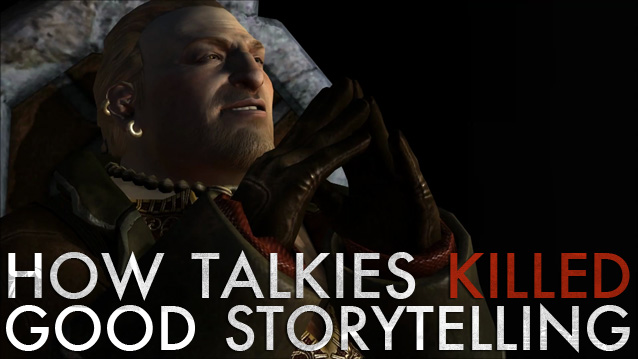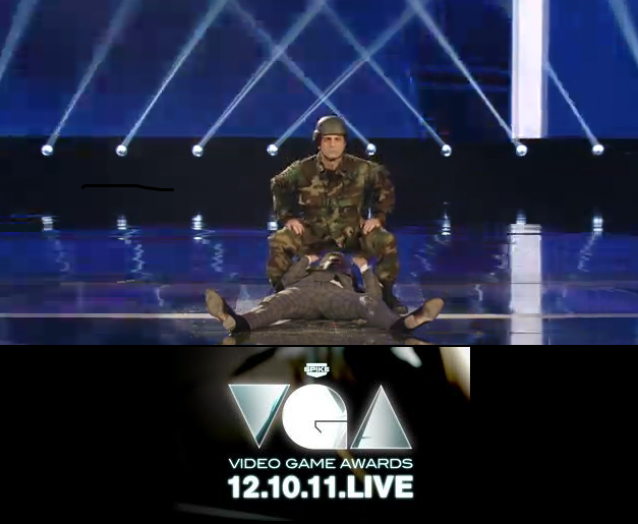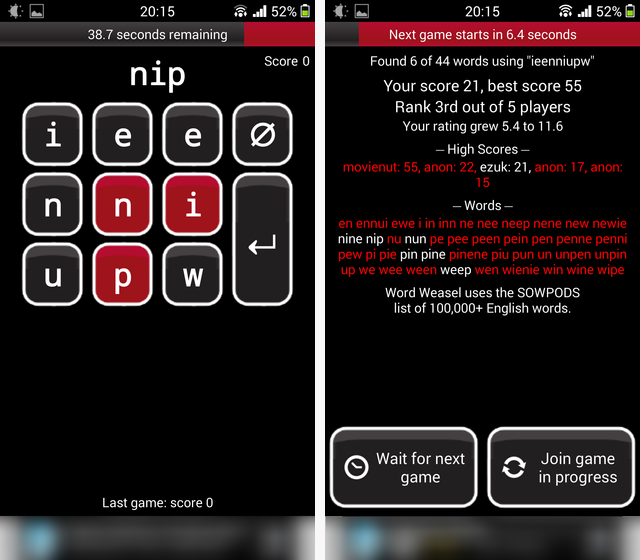


It can be easy to be intimidated by Madden NFL 25. Simply put, it’s massive. You can run an entire franchise, coach a team, be an individual player, create an online fantasy team, and lots more – so where do you start?
No matter how you want to ultimately play Madden NFL 25, a few simple steps will put you in position to get a lot of enjoyment out of it. While it’s tempting to just jump right into a season or head online to take on the world, chances are that you’ll wind up getting crushed if you skip out on a few fundamental building blocks. There is a lot that’s new this season, and if you take the time to learn the basics you’ll be in much better position whether you’re playing your neighbor across the street or the country.
The first place to start is the all-new Skills Trainer drills. These will not only teach you the basics of playing the game, but introduce you to some of the wickedly effective tools at your disposal. Best of all, you’ll learn what works best for you and what doesn’t. If you’re a Giants fan, chances are you’re not going to run the Read Option with Eli Manning. On the other hand, if you’re the 49ers with Colin Kaepernick or the Redskins with RGIII, knowing how to execute multiple play-fake options out of these sets will be the key to victory.

The most important virtue in the Skills Trainer is patience! These drills are quick and easily repeatable until you get the hang of things--and if you’re able to succeed and get Gold on them, an Ultimate Team card is your reward. After a few rounds, you’ll realize the value of the drills.
It’s also important to try and use the right teams in the Skills Trainer based on what you’re doing. A top running back like the Vikings’ Adrian Peterson is a great weapon in the running drills, while the aforementioned dual threats like Colin Kaepernick or Robert Griffin III will be tons of fun to use in the Read Option and Triple Option drills. You’re not tied to anyone at all--so mix and match, experiment and have fun while you learn the intricacies of the game.
Remember that you don’t need to get a Gold performance in all of the drills unless you want to get the Ultimate Team cards. The purpose of the trainer is to help you learn what’s at your disposal.
Acceleration Burst – This one sounds easy but a couple of the plays get tricky. Your goal is to get in the end zone, and most of the time you’ll just hit the right trigger turbo boost and get right in. But one or two plays, you’ll see a linebacker right in your way. Make a simple direction switch with the left stick to tuck inside him and you’ll be golden. The reward for gold performance is a Chris Johnson card.

Precision Modifiers – This is a great one to practice a few times, because you learn all about the new left trigger-powered Precision Modifier moves like trucks, jukes, spins, and dives. Be sure to pay attention to which move is being asked for, as the game will switch the order around to keep you on your toes. The reward for gold performance is a Walter Payton card.

Read Option – Here’s where things get really interesting. The Read Option (which we talk about in more detail later on) is a killer set to run out of with the right kind of team; the 49ers, Redskins, and Eagles are three good choices. It’s also, in many ways, its own Madden mini-game. In a matter of 4 seconds after the snap, you need to make 2 quick decisions, both of which are detailed in the tutorial before you practice. It seems intimidating at first, but a few go-rounds and you’ll know what keys to look for. The reward for gold performance is a Randall Cunningham card.

Triple Option – Oh, baby! The Triple Option is the Read Option “mini-game” on steroids, with three times as many decisions to make in half the time. Once again, it will seem daunting. Spend 15-20 minutes repeating these plays a few times, though, and you’ll get a feel for what to look for. Ultimately, you either hand to the FB right after the snap, keep it yourself as the QB, or toss to the RB. Again, it’s a lot to handle at first, but it’s worth it to spend the time. You will actually start to like it, too! The reward for gold performance is a Colin Kaepernick card.

Oklahoma Offense – Unlike the other Skills Trainer drills, you don’t really learn a lot here. Your goal is simply to power your way into the end zone, and you need to destroy an opponent to get there. Using the left trigger modifier, you can usually precision truck your way through the defender – although a spin here and there works well too – to gold. The reward for gold performance is an Adrian Peterson card.

Pass Trajectories – Nothing new for Madden 25 here; pass trajectories have been around for years. Toss a few lobs and bullets then move along. The easiest Gold you’ll get! The reward for gold performance is a Peyton Manning card.

Total Control Passing – Also not new for Madden 25; this is all about leading your receivers to the inside or outside. It’s definitely a good skill to acquire for real games, since the ability to get your receiver exactly where you want him to be in a tough spot is the difference between a completion and an interception. The reward for gold performance is a Dan Marino card.

User Catching – This is a bit tricky to master but definitely worthwhile to nail down for real games. Once you throw the ball, tap ‘B’ (360) or ‘Circle’ (PS3) to take control of the receiver. Next, move him into the passing area and hold ‘Y’ (360) or ‘Triangle’ (PS3) to catch it. It takes several goes at it to get there. The reward for gold performance is a Cris Carter card.

Ball Hawk – Using this skill in-game will pay major dividends, especially against careless opponents. Interceptions are still high-powered in Madden 25, and learning how to get in position then make a pick by holding‘Y’ (360) or ‘Triangle’ (PS3) is the most effective defensive tactic at your disposal. The reward for gold performance is a Deion Sanders card.

Oklahoma Defense – Conversely, there’s not a lot of value you’ll get out of this one, as these are all skills you’ve used in seasons past. It’s also a bit tough, as you’ll need to react very quickly to whichever direction the ballcarrier is going to prevent him from getting in the end zone. The reward for gold performance is an Ndamukong Suh card.

Offensive Hot Routes – If you’re not calling hot routes on a regular basis, you’re simply not paying attention. As we describe a little later on, the difference between succeeding and failing when passing is reading what the defensive backs are giving you, then taking advantage of it. This drill gives you everything you need to learn the right routes to call – make sure you’re paying attention. The reward for gold performance is an Aaron Rodgers card.

Defensive Individual Adjustments – While not as critical as on offense, defensive hot routes are very important at key moments when you’ve been caught off guard or recognize what’s coming. Being able to set up a Spy or QB Contain, for example, on a running quarterback can help when things are coming apart. The reward for gold performance is a Derrick Thomas card.

Offensive Audibles – No matter how terrific of a play you think you called, there’s a great chance the defense is lined up well to stop it. Changing the play at the line – especially when you stay in the same set – can help you turn a potential loss into a first down. The reward for gold performance is a Dick Vermeil card.

Defensive Audibles – Just as important as on offense, defensive audibles will get you out of (or into) trouble quickly. If you’re all-in on a running play but see a slot receiver covered by a linebacker, for example, move into a zone to cover yourself a little better. But be careful! Sometimes sticking with what you’ve called is the right choice. The reward for gold performance is a Tom Landry card.

The best part about the running game in Madden this season is that it’s totally legitimate. Unlike last season where interior running – i.e. running in between holes in the offensive line versus running outside to the left or right of the tackles – was a frustrating series of entanglements between you and your linemen, this season one of the big strengths of Madden is taking the ball up the middle. Some of the most powerful, consistent plays you can run are variations of Off Tackle and Dive; generally speaking, with a left trigger-powered Precision Truck move mixed in you’re going to get 4-5 yards or more on average. This isn’t necessarily as sexy as throwing bombs all over the field, but that’s not what we’re going for. Generating positive yardage regularly on the ground on first and second downs will win you the battle of time of possession and wear down your opponent’s defense – which sets you up for even bigger gains up the middle.

Read Option/Triple Option - While Read and Triple Option are not new this season, they’ve both been highlighted with indicators that make them easier to execute. The biggest challenge to a defense that is facing these options is knowing what’s coming – just like the real NFL. The most effective use of these options is mixing up the plays with the formation. For example, Shotgun-Normal is a formation that the option can come out of, and calling a play-action out of that after running a few regular options can be devastatingly effective. You can’t rely on nothing but options when playing the CPU or a real person – no matter what, they’ll get picked up on after a bit – but in key spots, using play-action or straight-up options will have defenders on their heels and put you in a winning position.

Passing remains much the same from last year, which is both a blessing and a curse. One thing is for sure – you will throw interceptions. Madden punishes poor decision making and if you heave the ball into double-coverage or to a well-covered receiver, only bad things will happen. It’s OK to throw the ball away (click on the right stick) if you don’t spot an open receiver! Nothing changes the momentum of a game faster than a pick-six.
Backed off DBs: If the defensive backs are not playing tight on your receiver (i.e. they’re lined up 8-10 yards off) then chances are that you can hit your WR on a curl. What if you didn’t call a curl? No problem! Call a hot route for your receiver to a curl, then throw the ball to him the moment that he starts to turn around. Unless the safety is coming over to help – which does happen, so watch out! – chances are that you’ll connect for a nice gain. This doesn’t work 100% of the time – and Madden vets will pick up on it quickly – but is one thing to look for on a regular basis. If you don’t abuse it, you’ll find it especially helpful in tight spots.

Close up DBs - Conversely, if you see a DB lined up very closely to your receiver, this is an opportunity to go big. If you didn’t call a streak, hot route to it. You’ll need to carefully watch the interaction between CB and WR at the snap. If your receiver is able to quickly break past his defender, you’ll have a second or two where he’s both wide open and moving fast – a recipe for big yards! Throw the ball to him in that window, and try to lead the receiver a little bit to the sidelines if you can to avoid the safety that’s probably trying to make his way over to cover him. Just like everything in Madden, this doesn’t always work – but if you mix your plays up nicely, you give yourself a better chance.

You don’t need to be the equivalent of an NFL coach to examine what’s happening. When you move to the line of scrimmage pre-snap, take a minute and look at what you’re facing. Even if you don’t know the real difference between a 4-3, Nickel, or Quarter, you can quickly get a feel for what your opponent is doing. Are there a lot of guys bunched together near the line of scrimmage? Chances are that’s a defense that’ll be loaded against the run. Are there 5 defensive backs stretched out from sideline to sideline? That’s probably a defense primed to defend a pass. Often it’s not super-easy to figure out what the defense is doing, but you will start to get a feel for what your best opportunity for success is if you pay attention to past results.

One thing you’ll want to master is Ball Hawk. Cornerbacks are very effective in Madden 25, and even if they’re in single coverage they often have an advantage over the receiver. Start off most plays as a defensive tackle – allowing your defensive backs and linebackers to read the play – then switch to the cornerback covering the receiver if the ball is thrown in that direction. You can ruin your opponent’s day by simply letting the corner maintain his coverage then hitting ‘Y’ or ‘Triangle’ when the ball gets near him. Chances are you’ll make the pick and change the dynamics of the game.
Man vs. Zone – Getting pressure is extremely difficult in Madden unless you blitz, but blitzing is risky because you’ll leave receivers open. The best defense in Madden is still Man coverage, and if you match up your formation with the offense, that’s your best chance for success. For example, if the offense comes out in a 3-wide set, make sure you choose a Nickel or Dime in order to get a competent defender on the extra receiver. Madden 25 does a nice job letting you know if a play is Man or Zone once you choose the formation – so make use of it. Zones can be effective on occasion in order to mix things up, but when push comes to shove, Man coverage wins in Madden.

Being a player, coach, or owner is the heart of Madden 25. As weeks go by and goals are met, you can improve player attributes. Take advantage of it! While there are certain attributes all players should have as much of as possible (such as Speed), here are some tips on the best ways to use Player Progression to maximize each player’s effectiveness.

QB – Throw Power is huge in Madden, as those with a lot of it can simply make more throws than those without. Combine that with Deep Accuracy, and your QB will be a big-time weapon.
RB – Speed is a big advantage, especially if you’re running outside; without it, there’s no reason to do anything but head up the middle. Carry is huge as well – everyone hates fumblers.
WR – Route Running is the difference between good and great receivers, which along with the Release attribute means these guys get separation.
TE – A good Run Blocking tight end will spring big yards, and those who can also Catch in Traffic can contribute in both aspects of offense.
OL – These are simple – Run Blocking and Pass Blocking are all that really matter here. Make them as high as possible.
DE – Acceleration will help get pressure on a quarterback, while improving either the Finesse Move or Power Move (whichever one is higher to start with) can make your lineman brutally efficient.
DT – Combining Block Shedding and Power Move attributes for your interior linemen will help combat inside running.
LOLB – Tackling is a key attribute here, along with Zone Coverage. Improving both helps in both run and pass defense.
MLB – The QB of the defense is at his best when his Hit Power and Tackle are high; people will think twice before crossing through his area.
ROLB – Strong Hit Power and Finesse Moves will put this key player in the best position to wreak havoc.
SS – Tackle is a big one here, since the Strong Safety is often the last man between a runner and the end zone. Zone Coverage is important too, along with Hit Power.
FS – Zone Coverage is huge for Free Safety, along with Catch – especially since Ball Hawk can so easily be executed at this position.
Choosing an Owner Type – New this year is Owner, and you have the option which kind to be. There’s no wrong decision you can make here, although different types of owners give you different options. If you simply take on the persona of a real-world person (all of which are available) you’ll inherit their exact situation today; choosing Jerry Jones means you’re sitting on a massive pile of cash in a brand new stadium, while picking Alex Spanos in San Diego brings all of the stadium problems along with it. If you create an owner, you can do so by being a Former Player (which gives you a jump start on Legacy points but no cash), a Lifelong Fan (no cash either but popular with the fans), or a Mogul (tons of cash but a wary team and fanbase). Money is important as years go on if you want to rebuild, relocate, and/or hire great support staff.

Navigating Finances – Speaking of money, it will be as important as you need it to be. The only way you can ever “lose” in Owner Mode is by going bankrupt, which is really hard to do. As long as you’re winning games, fans will flock to the stadium. If the prices for all of your merchandise are within reason, they’ll get purchased. While it is fun to tinker with the prices of individual items like jerseys and French Fries, unless you get completely out of whack one way or the other, you’ll be making plenty of money. After all, this is the NFL.

Managing Your Staff – Some teams are run by high-functioning executives, and others aren’t. The nice thing about Owner mode is that it’s obvious right from the start where things are going well and where they’re not. Your challenge, of course, is figuring out what’s most important. Fan happiness? Marketing? Merchandise? Money is most important when you’re looking to sign players and coaches or build stadiums. The happier you make everyone, the more money you’ll have. Winning is the best way to make the needle move in the right direction; without that, you’re going to have a hard time.

Your Stadium – Some teams are in brand new buildings, others are not. Depending on what team you choose, you could be in a terrible situation (like San Diego) or living in paradise (such as Dallas). If you plan on sticking around awhile, it pays to improve parking and fan sections sooner rather than later. If you want to bolt for another city – which is tons of fun – then ignore everything and focus on winning. After all, new stadiums are very expensive even when the new city helps out. Charge a little more for everything and try to make a Super Bowl run. Building a state-of-the-art stadium is a massive investment – but worth it!
Weekly Practices – Take advantage of weekly practices, as they’re a good mine. Not only will it give you a chance to improve your own stick skills, but you’ll get valuable XP for your players in addition to what you get in the games. Best of all, whether you’ve got a few minutes or an hour, there’s a practice scenario for you – and they all give you the same 2000 XP.

Goals – Winning is always the most important thing, but you can still help yourself out by completing various goals along the way. Goals are set up at multiple levels – for individual players there are weekly, seasonal, and milestone (career) goals. Meeting weekly and seasonal goals get extra XP to be used in progressing the player, but since everyone on your team has their own unique goals to reach it can be challenging to keep track. The best advice is to simply use your best players to the best of their abilities and, naturally, win. Most of the XP will naturally happen.
Goals for owners are different, as there’s no XP that will help out. Instead, as an owner, you want to make the Hall of Fame – and to do that, you need to maximize Legacy score. As you would expect, winning is everything. From having 12, 14, or 16 win seasons to multiple championships, nothing makes a Legacy score increase like banking victories.





 The Crew: useful tips
The Crew: useful tips Rainbow Six and the Commodity of Violence
Rainbow Six and the Commodity of Violence Tired of Words With Friends? We Found 2 Android Multiplayer Word Games That Are Better
Tired of Words With Friends? We Found 2 Android Multiplayer Word Games That Are Better The Long Dark Interview with Hinterland Games Raphael van Lierop
The Long Dark Interview with Hinterland Games Raphael van Lierop Ninjatown: NTSE Plaza :: DS Walkthrough
Ninjatown: NTSE Plaza :: DS Walkthrough